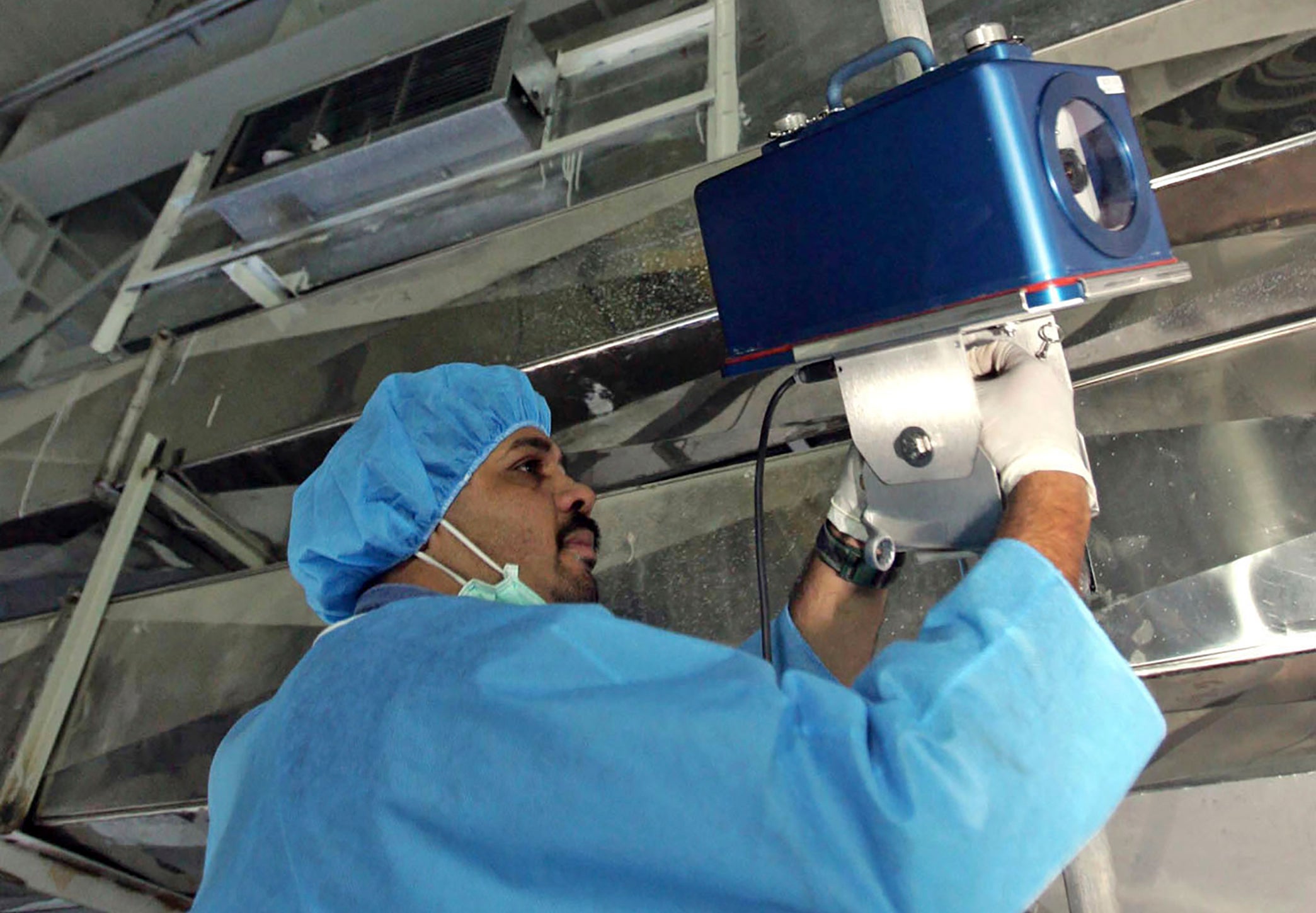Report: Iran turns off 2 of UN nuclear watchdog's cameras
Iran turned off two surveillance cameras of the United Nations’ nuclear watchdog that monitored one of its atomic sites, state television reported Wednesday

Your support helps us to tell the story
From reproductive rights to climate change to Big Tech, The Independent is on the ground when the story is developing. Whether it's investigating the financials of Elon Musk's pro-Trump PAC or producing our latest documentary, 'The A Word', which shines a light on the American women fighting for reproductive rights, we know how important it is to parse out the facts from the messaging.
At such a critical moment in US history, we need reporters on the ground. Your donation allows us to keep sending journalists to speak to both sides of the story.
The Independent is trusted by Americans across the entire political spectrum. And unlike many other quality news outlets, we choose not to lock Americans out of our reporting and analysis with paywalls. We believe quality journalism should be available to everyone, paid for by those who can afford it.
Your support makes all the difference.Iran turned off two surveillance cameras of the United Nations' nuclear watchdog that monitored one of its atomic sites, state television reported Wednesday.
The report did not identify the site, but it appeared to be a new pressure technique by Tehran as Western nations seek to censure Iran at a meeting this week of the International Atomic Energy Agency.
The Iranian state television report described the two cameras as monitoring “OLEM enrichment levels and flowmeters.” That appeared to refer to the IAEA's Online Enrichment Monitors, which watch the enrichment of uranium gas through piping at enrichment facilities.
Iran currently is enriching at both its Fordo and Natanz underground nuclear sites.
Iran and world powers agreed in 2015 to the nuclear deal, which saw Tehran drastically limit its enrichment of uranium in exchange for the lifting of economic sanctions. In 2018, then-President Donald Trump unilaterally withdrew America from the accord, raising tensions across the wider Middle East and sparking a series of attacks and incidents.
The Vienna-based IAEA did not immediately acknowledge Iran's move. The agency did not immediately respond to a request for comment from The Associated Press.
Iran and world powers agreed in 2015 to the nuclear deal, which saw Tehran drastically limit its enrichment of uranium in exchange for the lifting of economic sanctions. In 2018, then-President Donald Trump unilaterally withdrew America from the accord, raising tensions across the wider Middle East and sparking a series of attacks and incidents.
In the time since, Iran has broken every limit imposed by the deal and now enriches uranium up to 60% purity — a short, technical step from weapons-grade levels of 90%. However, the IAEA had been allowed to continue visiting sites.
Iran has been holding footage from IAEA surveillance cameras since February 2021 as a pressure tactic to restore the atomic accord.
Negotiations between Iran and the West to restart the accord fell apart in March.
___
Gambrell reported from Dubai, United Arab Emirates.